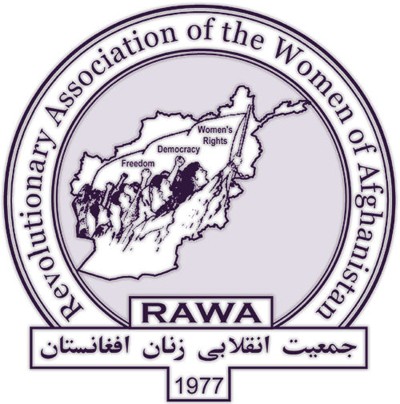By Nazish Brohi
While Sharbat Gul’s eyes powerfully transfixed the world from the cover of National Geographic in 1985, Aisha’s ordeal depicted on the cover of Time this week fixates our attention on where her nose would be. The metaphoric pain in the eyes has given way to the figurative – in this case, the disfigurative.

The Revolutionary Afghan Women’s Association (RAWA) declared US and its stooges as the main human rights violators in the country, and if there is any ambiguity where RAWA’s loyalties lie, there slogan is, ‘Neither the US nor Jihadis nor Taliban, Long Live the Struggle of Independent and Democratic Forces of Afghanistan’. Founded in 1977, RAWA is the oldest political and social organisation of Afghan women struggling for peace, freedom, democracy, and women’s rights in an Afghanistan, and are as opposed to the Northern Alliance, who the US allies with, as the Taliban.
The visceral cringe at Aisha’s mutilated face is surpassed by the painful cerebral spasm at the congruent headline: “What Happens If We Leave Afghanistan.”
The connective logic is that gruesome violence against women would occur were the US to leave Afghanistan. Like it isn’t now.
The story shows what the Taliban are capable of doing. Yet the US policy includes negotiating the ‘good’ Taliban. In the early phase of the War on Terror almost a decade ago, the desire to liberate Afghan women framed the attacks on Afghanistan as a ‘just war,’ sidetracking the revenge for 9/11 into philanthropic bombing for justice and rights of women. Afghan women were positioned as the voiceless subalterns of the Taliban Islamist order, and magnified voices from across American government, media and civil society called for occupation for liberation.
When the presence of coalition forces didn’t dissolve the blue burqas or give women economic opportunities and in fact, added to the list of women headed households without means of survival, the world muttered ‘culture’ and got on with the rest of it. Afghan women receded into the background again, to crop up again only now, when the US’s justification of its presence is under strong attack, support for its troop presence in Afghanistan at an all-time low.
Except that Afghan women did not quite disappear in the middle. The Revolutionary Afghan Women’s Association (RAWA) declared US and its stooges as the main human rights violators in the country, and if there is any ambiguity where RAWA’s loyalties lie, there slogan is, ‘Neither the US nor Jihadis nor Taliban, Long Live the Struggle of Independent and Democratic Forces of Afghanistan’. Founded in 1977, RAWA is the oldest political and social organisation of Afghan women struggling for peace, freedom, democracy, and women’s rights in an Afghanistan, and are as opposed to the Northern Alliance, who the US allies with, as the Taliban. They also question where the $38 billion allocated for Afghanistan since the invasion has gone.
Nor is it a matter of RAWA versus the rest. As someone who has considerable experience of working with women survivors of violence, I have evaluated women’s shelters in Afghanistan and monitored women’s rights programs for donors. I have seen horrendously scarred women, even grotesque amputations and burns, all of whom acquired their injuries while under the protection of US occupation. While the US cannot be directly held responsible for domestic violence, they patronise provincial governors and officials who allow such practices to continue, adjudicate them in instances, in addition to cluster bombing and aerial attacks on civilians that pass through sanitized semantics to appear as tangential collateral damage. There are no verified counts of Afghan civilian casualties by US assaults, and political analysts have been of the opinion that this is deliberate, while every coalition casualty is well-documented. Countless women approach shelters simply because they have nowhere else to go to, once their male family members and children are wiped out in such attacks.
The Time magazine cover has started a controversy that has already drawn hundreds of comments. The attention, however, has been not on the tagline but on Aisha’s photograph, whether it was exploitative or shockingly violent or desensitising. How about asking these very questions about the occupation?
I remember seeing a strange discussion on an American daytime TV talk show, on whether date rape was worse or stranger rape, with women who had experienced either one trying to prove theirs was a more painful experience. Domestic mutilation or international bombing seems to offer Afghan women the same choice.
While Aisha’s picture conjectures what happens if they leave, in effect, emotional blackmail for supporting the war offensive, another photograph of a woman torn apart by bomb shrapnel, bleeding to death while in her wedding dress could be captioned: “What Happens if They Stay.”
In the transition from Sharbat Gula’s haunting eyes to Aisha’s ghost nose, the world has had to lower its gaze.
Nazish Brohi is a writer and researcher and has extensive experience of working in the development sector.



